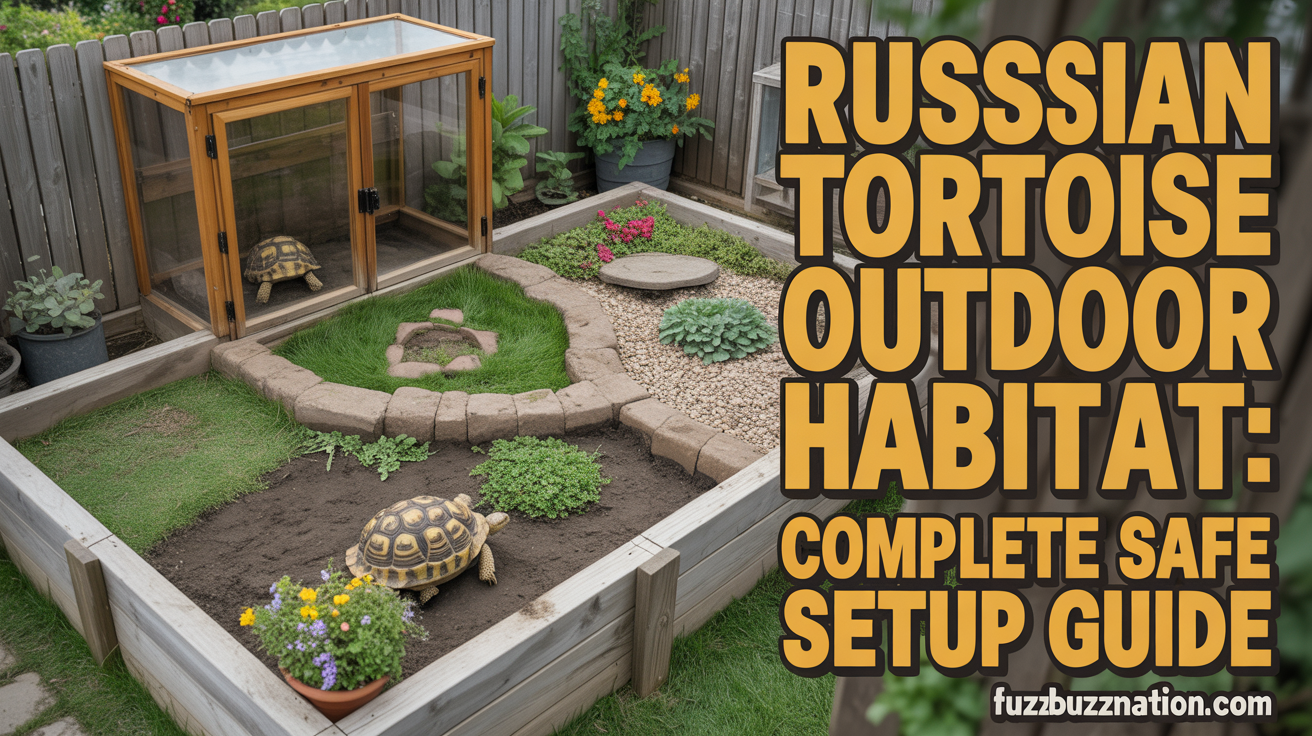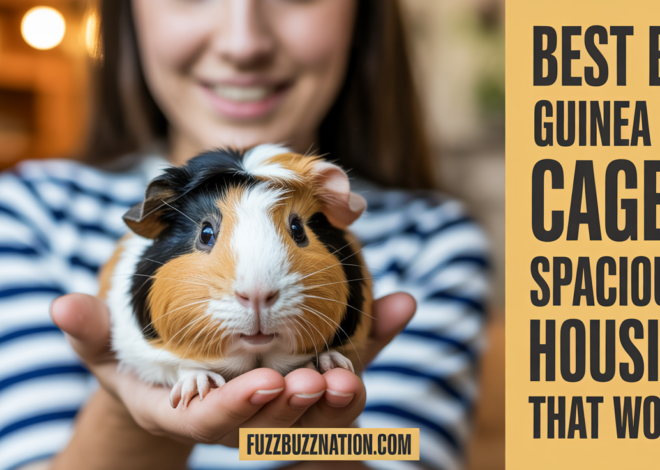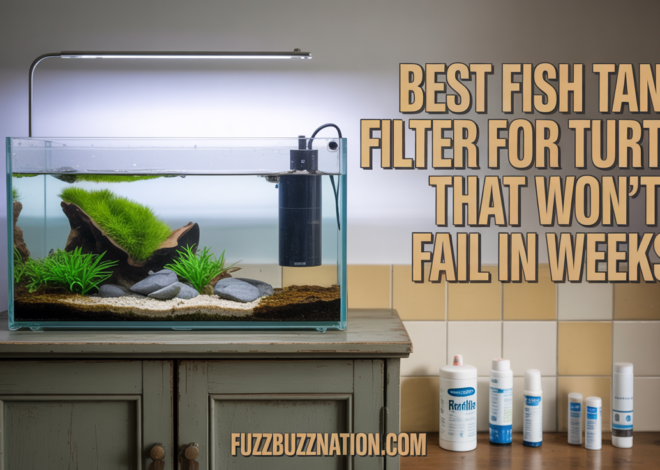
Russian Tortoise Outdoor Habitat: Complete Safe Setup Guide
Russian tortoises thrive in secure outdoor habitats with minimum 16 square feet per tortoise, featuring well-drained soil, burrow opportunities, diverse edible vegetation, and protection from predators and extreme weather conditions. After maintaining outdoor Russian tortoise enclosures for over fourteen years across various climates and successfully housing multiple tortoises in naturalistic outdoor pens, I’ve learned that proper outdoor habitat design dramatically improves tortoise health, activity levels, and natural behaviors compared to indoor housing, though climate limitations and predator protection remain critical challenges requiring careful planning and ongoing management.
The key to successful outdoor Russian tortoise housing lies in understanding their natural Central Asian desert habitat requirements, recognizing that outdoor living is only appropriate in certain climates during specific seasons, and implementing multiple safety layers that protect these vulnerable reptiles from numerous environmental and predatory threats.
Understanding Russian Tortoise Natural Habitat
Native Climate and Environment
Russian tortoises (Testudo horsfieldii) inhabit arid grasslands and desert regions of Central Asia including Kazakhstan, Uzbekistan, and surrounding areas with extreme temperature variations and sparse vegetation.
During my research into native habitat conditions, I learned that wild Russian tortoises experience hot, dry summers reaching 100°F+ and cold winters requiring months of brumation in deep burrows protecting them from freezing temperatures.
The natural landscape features sandy or rocky soil with good drainage, scattered vegetation including grasses and wildflowers, and minimal tree cover creating the sun-exposed environment these tortoises need.
Annual rainfall in their native range averages only 8-12 inches, occurring primarily in spring when vegetation growth provides peak food availability before summer drought conditions.
Climate Requirements for Outdoor Housing
Russian tortoises require outdoor temperatures consistently between 65-90°F for active periods, with access to both sunny basking areas reaching 95°F and shaded retreats staying cooler.
I’ve successfully housed Russian tortoises outdoors in USDA zones 7-10 during appropriate seasons, with year-round outdoor housing only suitable in zones 9-10 providing mild winters above 50°F nighttime lows.
Spring through fall outdoor housing (April-October in most zones) works well in temperate climates, bringing tortoises indoors during winter months when temperatures drop consistently below 60°F.
Humidity levels between 40-60% suit Russian tortoises best, with the low humidity requirements making them easier to house outdoors than tropical species requiring constant high moisture.
Behavioral Needs and Natural Activities
Wild Russian tortoises are active foragers spending mornings and late afternoons searching for food, basking periodically, and retreating to burrows during extreme heat or cold.
Through observing my outdoor tortoises, I’ve documented significantly higher activity levels, more natural foraging behaviors, and better muscle tone compared to their indoor-housed counterparts.
Burrowing represents a critical natural behavior, with tortoises creating or utilizing underground retreats that regulate temperature and provide security from predators and weather extremes.
Social interactions including male territorial displays and breeding behaviors occur more naturally in outdoor settings providing adequate space for multiple tortoises to establish territories.
Essential Design Elements
Minimum Size Requirements
Single Russian tortoises need minimum 16 square feet (4’x4′) of outdoor space, though 32+ square feet (4’x8′ or larger) provides better exercise and foraging opportunities.
During my experience housing multiple tortoises, I’ve found that 50-75 square feet accommodates 2-3 adults comfortably with reduced territorial conflicts and adequate grazing area.
Larger enclosures allow diverse microclimates including sunny basking areas, shaded retreats, and varied terrain features that encourage natural movement and exploration behaviors.
The more space provided, the less frequently vegetation requires supplementing, as larger areas support more edible plants and allow grazing rotation between sections.
Wall Height and Barrier Design
Walls must be minimum 12 inches tall with an additional 6 inches buried underground to prevent digging escapes, totaling 18 inches of barrier depth.
I construct walls using concrete blocks, wood, or large rocks, ensuring no gaps exist where determined tortoises could squeeze through during escape attempts.
Smooth interior walls without footholds discourage climbing, as some Russian tortoises develop surprising climbing abilities when motivated by breeding drives or escape desires.
Overhangs or inward-angled wall tops prevent ambitious climbers from scaling barriers, particularly important during breeding season when males become especially adventurous.
Substrate and Soil Composition
Well-draining sandy loam or topsoil mixed with sand (70% soil, 30% sand) provides ideal substrate allowing natural burrowing while preventing waterlogging.
During habitat construction, I ensure 12-18 inches of substrate depth in designated burrow areas, allowing tortoises to dig retreats reaching depths where temperatures remain stable.
Avoid pure clay soils that compact and prevent drainage, or pure sand that doesn’t hold burrow structure, both creating problems for tortoise health and behavior.
Adding organic matter including dried leaves or composted materials enriches soil while creating texture variation that tortoises enjoy investigating.
Drainage and Water Management
Proper drainage prevents standing water that can lead to shell rot, respiratory infections, and drowning hazards for tortoises caught in flooded enclosures.
I grade enclosures with gentle slopes directing water away from burrow areas and basking spots, ensuring rain doesn’t accumulate in tortoise activity zones.
French drains or gravel layers beneath substrate provide additional drainage in areas with heavy clay soils or high water tables prone to flooding.
Shallow water dishes with easy entry/exit points provide drinking and soaking opportunities without creating drowning risks from deep, steep-sided containers.
Shelter and Temperature Regulation
Natural Burrow Creation
Designated burrow areas with loosened, deeper substrate allow tortoises to dig natural retreats, though artificial burrows provide immediate shelter for new habitat inhabitants.
During construction, I create starter burrows using buried pipes, boxes, or dug tunnels that tortoises can modify, providing instant temperature-regulated refuges.
Multiple burrow locations throughout enclosures ensure all tortoises access shelter regardless of dominance hierarchies or territorial disputes between individuals.
Monitoring burrow use helps identify whether artificial structures meet tortoise needs or require modifications for improved temperature regulation or security.
Artificial Shelters and Hides
Wooden doghouses, plastic storage containers, or custom-built shelters prov ide weather protection and security when positioned in shaded areas with open south-facing entrances.
I use shelters measuring minimum 18″x18″x12″ for single adults, insulating with straw or hay that tortoises burrow into for additional temperature regulation.
Multiple shelter options prevent dominant tortoises from monopolizing preferred locations, ensuring subordinate individuals also access protection during temperature extremes.
Regular shelter maintenance including bedding changes, structural inspections, and predator-proofing preserves their effectiveness throughout active seasons.
Heating Options for Cool Weather
Outdoor-safe heating pads under portions of shelters provide supplemental warmth during cool spring or fall nights, extending outdoor housing seasons safely.
Ceramic heat emitters in weatherproof fixtures can warm shelter interiors during marginal temperature periods, though fire safety and electrical protection require careful consideration.
Through managing outdoor tortoises in zone 7, I’ve used heating elements successfully during shoulder seasons, allowing outdoor housing from March through November rather than just May-September.
Never rely solely on supplemental heating for winter housing in cold climates, as equipment failures during extreme weather create life-threatening situations.
Vegetation and Landscaping
Edible Plant Selection
Russian tortoises thrive on diverse diet including dandelions, clover, plantain, chicory, and various grasses that should comprise 80-90% of their natural intake.
During habitat planting, I seed with tortoise-safe wildflower mixes and allow natural weed growth including dandelions that tortoises eagerly consume throughout growing seasons.
Avoid toxic plants including azaleas, oleander, ivy, and many common ornamentals that could poison tortoises, researching all vegetation before introducing to enclosures.
Edible hibiscus, mulberry leaves, grape leaves, and other safe shrubs provide browse variety and shade while contributing to tortoise nutrition.
Creating Diverse Microhabitats
Varying terrain through gentle slopes, rock piles, and excavated areas creates temperature gradients and exploration opportunities that encourage natural behaviors.
I incorporate flat basking rocks in sunny areas that absorb heat and provide ideal thermoregulation spots, positioning them near shelter access for quick retreats.
Partially buried logs, root systems, or rock formations create climbing opportunities and visual barriers that reduce stress in multi-tortoise enclosures.
Planting density variation with open grazing areas and densely vegetated sections mimics natural habitat patchiness that tortoises navigate in wild environments.
Maintaining Plant Growth
Rotating grazing areas or providing supplemental greens ensures tortoises don’t overgraze limited vegetation, particularly in smaller enclosures or during peak summer growth slowdowns.
Through managing planted habitats, I’ve found that 50+ square feet of space supports vegetation growth that mostly sustains 1-2 tortoises with minimal supplementation.
Seasonal planting with cool-season and warm-season species extends natural food availability across longer periods than single-season plantings.
Composting tortoise waste into planting areas recycles nutrients supporting vegetation growth while maintaining soil health in enclosed systems.
Predator Protection Strategies
Common Predator Threats
Dogs, cats, raccoons, opossums, birds of prey, and even rats pose serious threats to Russian tortoises, with attacks potentially fatal or causing severe injuries.
During my years maintaining outdoor habitats, I’ve encountered multiple predator attempts including raccoons trying to dig under walls and hawks circling above enclosures.
Smaller tortoises face higher predation risk, making outdoor housing more appropriate for adults over 5 inches than vulnerable juveniles under 4 inches.
Nighttime represents peak danger periods as nocturnal predators including raccoons actively hunt, making secure overnight shelter essential for tortoise survival.
Physical Barrier Systems
Hardware cloth or welded wire mesh covering enclosures provides overhead protection from aerial predators while allowing sunlight, rain, and air circulation.
I use 1/2 inch hardware cloth rather than chicken wire, as determined predators can tear through chicken wire but struggle with heavier-gauge welded materials.
Burying wire mesh 12 inches underground around perimeter walls prevents digging predators from tunneling into enclosures from outside.
Hot wire or electric fencing around enclosure exteriors deters persistent predators including dogs, though these systems require proper installation and maintenance.
Monitoring and Surveillance
Regular enclosure inspections identify potential breach points including damaged walls, gaps under barriers, or overhead cover tears requiring immediate repair.
Motion-activated cameras placed near enclosures document predator activity, helping identify specific threats and optimal times for protective barrier reinforcement.
Through surveillance monitoring, I’ve discovered nocturnal predator patterns that guided my protective strategy improvements, preventing potential attacks.
Daily tortoise counts ensure all residents are present and unharmed, with missing individuals triggering immediate searches before predation or escape results in permanent loss.
Seasonal Management
Spring Transition Outdoors
Gradual outdoor transition starting when nighttime temperatures consistently exceed 50°F prevents thermal shock, with initial outdoor periods limited to warm, sunny days.
I begin spring outdoor housing by placing tortoises outside during peak warmth (10am-4pm) and bringing them indoors overnight, extending outdoor time as temperatures stabilize.
Early season supplemental heating in shelters bridges temperature gaps during cool spring nights, allowing earlier outdoor transition than unheated enclosures support.
Monitoring weather forecasts prevents leaving tortoises outside during unexpected cold snaps or severe weather that could threaten health.
Summer Heat Management
Providing shaded areas, moisture sources, and cool retreats prevents overheating during summer temperature peaks, particularly in hot climates exceeding 95°F regularly.
Through managing tortoises in hot summers, I’ve observed that adequate shade and burrow access allows them to thermoregulate effectively without stress.
Misting enclosures during extreme heat provides evaporative cooling and humidity that benefits tortoises, though avoid creating swampy conditions promoting respiratory problems.
Summer brings peak vegetation growth providing abundant natural food, reducing supplementation needs compared to spring or fall shoulder seasons.
Fall Preparation and Indoor Transition
Bringing tortoises indoors before consistent nighttime lows below 50°F prevents cold stress, with timing varying by climate zone and individual seasonal weather patterns.
I transition tortoises indoors during October in zone 7, earlier in colder zones or later in warmer regions, based on actual temperature monitoring rather than calendar dates.
Pre-winter health checks including weight assessment, fecal examination, and overall condition evaluation ensure tortoises enter indoor seasons in good health.
Health Monitoring and Maintenance
Regular Health Checks
Weekly tortoise inspections examining eyes, nose, shell condition, and behavior identify health issues early when treatment proves more effective than after problems advance.
During routine checks, I assess activity levels, appetite, fecal consistency, and basking behavior that indicate overall health status and potential concerns.
Weight monitoring through monthly weighing detects gradual changes suggesting dietary inadequacies, parasites, or other health problems requiring veterinary attention.
Shell pyramiding, unusual softness, or damage from predator attempts requires immediate evaluation and potential habitat modifications preventing future occurrences.
Parasite Management
Outdoor tortoises face higher parasite exposure than indoor animals, requiring annual fecal examinations and deworming protocols under veterinary guidance.
Through managing outdoor colonies, I’ve maintained routine fecal testing identifying and treating parasites before they cause visible health problems.
Preventing fecal contamination of food and water sources reduces parasite transmission, though complete prevention is impossible in outdoor environments.
Cleaning and Sanitation
Regular waste removal from heavy-use areas maintains sanitation and reduces parasite loads, though complete habitat cleaning isn’t necessary or beneficial.
I spot-clean daily around shelters and basking areas where waste concentrates, allowing natural decomposition in planted sections to enrich soil.
Water dish cleaning and refilling occurs daily or more frequently in hot weather, preventing bacterial growth in stagnant water.
Annual deep cleaning of artificial shelters including bedding replacement and disinfection maintains hygiene without disturbing natural habitat elements.
Climate-Specific Considerations
Hot, Arid Climates (Zones 9-10)
Year-round outdoor housing works in consistently warm climates, though summer shade and cooling spots remain essential for health during extreme heat periods.
Desert Southwest owners successfully house Russian tortoises outdoors permanently, taking advantage of climate similarity to native Central Asian habitats.
Irrigation or misting becomes necessary during extreme drought to maintain minimal vegetation and prevent excessive dehydration.
Temperate Climates (Zones 7-8)
Seasonal outdoor housing from April/May through September/October provides extended outdoor benefits while avoiding winter cold stress and spring/fall temperature instability.
I’ve found that zone 7-8 climates offer ideal conditions for seasonal outdoor housing, providing warm summers with manageable transition periods.
Heated shelters or greenhouses extend outdoor seasons into November and starting in March, though monitoring remains essential during temperature fluctuations.
Cool, Humid Climates (Zones 6 and below)
Limited outdoor housing during peak summer months (June-August) may be possible, though short seasons and high humidity create challenges for desert-adapted Russian tortoises.
Cold climate owners often choose indoor housing exclusively, as the brief outdoor season and setup effort may not justify limited outdoor access time.
Frequently Asked Questions
Can Russian tortoises live outside year-round?
Russian tortoises can live outdoors year-round only in USDA zones 9-10 with mild winters where nighttime temperatures rarely drop below 50°F. Most climates require seasonal outdoor housing (spring through fall) with indoor winter housing. Year-round outdoor housing needs secure heated shelters for occasional cool periods even in warm climates. In zones 7-8 and cooler, bring tortoises indoors before consistent nighttime temperatures fall below 50°F, typically October-November, and transition outside after spring temperatures stabilize above 50°F nightly.
How big should an outdoor Russian tortoise enclosure be?
Minimum 16 square feet (4’x4′) for single adults, though 32+ square feet provides better quality of life. For multiple tortoises, provide 50-75+ square feet to reduce territorial conflicts and support adequate vegetation. Larger enclosures always benefit tortoises through increased exercise, natural foraging, and diverse microhabitats. Unlike indoor housing where space is limited, outdoor enclosures should be as large as practically possible, with 100+ square feet considered ideal for 2-3 adult Russian tortoises.
What plants are safe for Russian tortoise outdoor habitats?
Safe plants include dandelions, clover, plantain, chicory, various grasses, hibiscus, mulberry, and grape leaves. Avoid toxic plants including azaleas, oleander, ivy, rhododendron, and many common ornamentals. Research every plant species before introducing to tortoise enclosures, as many attractive landscaping plants are poisonous. Native wildflower mixes designed for pollinator gardens often contain tortoise-safe species providing both food and habitat enrichment. When uncertain about plant safety, exclude it from tortoise areas.
How do I protect my outdoor tortoise from predators?
Use multiple protection layers: walls minimum 12 inches tall with 6 inches buried underground, overhead hardware cloth covering, secure nighttime shelters, and perimeter barriers like electric fencing. Monitor daily for breaches and predator signs. Hardware cloth (not chicken wire) provides better predator protection. Motion-activated cameras help identify specific threats. Never leave small tortoises (under 5 inches) outdoors unsupervised, as they face higher predation risk. Assume predators will attempt entry and design defenses accordingly.
When should I bring my Russian tortoise indoors for winter?
Bring tortoises indoors when consistent nighttime temperatures drop below 50°F, typically October-November in zones 7-8, earlier in colder climates. Watch weather forecasts and transition before cold snaps rather than waiting for first frost. Spring outdoor transition occurs when nighttime temperatures consistently exceed 50°F and daytime temps reach 65-70°F, typically April-May in temperate zones. Gradual transitions prevent temperature shock, starting with daytime outdoor periods and extending to full days as weather stabilizes.
Planning Your Outdoor Habitat
Successful outdoor Russian tortoise housing requires honest assessment of your climate, available space, predator threats, and commitment to ongoing habitat maintenance throughout active seasons.
Start with secure, properly sized enclosures meeting minimum requirements, then enhance with naturalistic features, diverse plantings, and enrichment elements as budget and time allow.
Prioritize safety through multiple predator barriers, secure walls, and weather-appropriate shelters over aesthetic elements that don’t directly benefit tortoise welfare.
Monitor your tortoises closely during initial outdoor transitions, learning their behavior patterns and habitat preferences that guide future improvements.
Remember that outdoor housing dramatically improves Russian tortoise quality of life through natural sunlight, exercise, and foraging opportunities that indoor environments cannot replicate, making the setup effort worthwhile for appropriate climates and dedicated owners.


